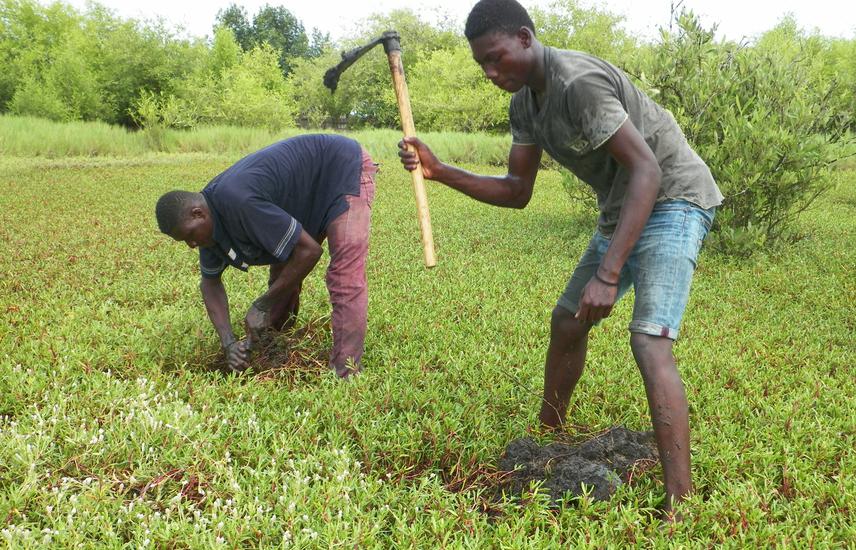Eric Ofori Agyekum
This pilot project is aimed at contributing to;
(i) Restoration of the mangrove ecosystems in the KLCRS to provide ecosystem services to benefit the communities within the KLCRS:
Women and youth groups engaged in environmental conservation within KLCRS will be contracted to supply mangrove seedlings to restore degraded mangrove ecosystems.
(ii) Create awareness in communities on the ecosystem services provided by mangrove ecosystems (especially flood regulation) and the need to conserve the ecosystems; and alternative sources of fuelwood (Senna siamea). Audio messages will be created played on community information centres.
(iii) Provision of sustainable alternative sources of energy (fuelwood) to reduce pressure on mangrove ecosystems: Demonstration plantation of Senna siamea will be established to train community groups (Fishmongers Associations, Youth and Women Groups) and mangrove harvesters on the establishment and management of Senna siamea plantations to supply fuelwood.

Planting of white mangrove wildlings in a previously cleared mangrove forest area taken over by Sesuvium portulacastrum
One of the main livelihood activities for the communities within the Keta Lagoon Complex Ramsar Site (KLCRS) is fishing. These communities process fish by smoking using mangroves which are harvested within the KLCRS. Degradation of the mangrove ecosystems has aggravated the impacts of climate change in the KLCRS. Coastal erosion is eroding away whole communities and animal habitats whereas floods destroy properties, livelihoods, ecosystems and threaten lives.
Several initiatives have focused mainly on restoration of mangroves and educating communities on the functions of mangrove ecosystems, especially in protecting the communities from floods, serving as animal habitat, providing beautiful scenery for tourism, and providing breeding ground for fish which is over-exploited.
However, despite the awareness creation, fish processors and households do not have affordable and sustainable alternative sources of fuelwood. Consequently, mangroves are continuously degraded.
In addition to education and awareness creation and provision of mangrove seedlings for planting, the proposed pilot project will identify and train mangrove harvesters and communities to establish and manage woodlots made of fast-growing and coppiceable species such as Senna siamea to supply households and fish processors.
Essentially:
• An Audio message in local language on conservation values of mangroves and alternative sources of fuelwood will be developed and distributed to local FM Stations and Community Information Centers in particular for playing.
• A project inception meeting will be organised to meet existing community groups and other stakeholders to discuss the project and their involvement. The meeting will also identify a suitable place for the establishment of the ‘demonstration’ Senna siamea woodlot and degraded areas for mangrove planting. Existing community groups (women and youth) will be identified and contracted to raise 5,000 mangrove seedlings and 3000 Senna siamea seedlings. Two individuals from the community where the woodlot will be established will be identified and tasked to coordinate project activities and help with the establishment and maintenance of ‘demonstration’ Senna siamea woodlot.
• Community groups and other stakeholders will be involved in planting mangrove seedlings in identified degraded areas in the various communities.
• Community groups (fishmonger associations, youth and women groups) and mangrove harvesters will be given practical training to establish Senna siamea woodlots to reduce pressure on mangrove ecosystems within the KLCRS. As part of the training, trainees will be assisted to establish one hectare of Senna siamea woodlot. Trained individuals will be supplied with Senna siamea seedlings to establish their own woodlots.